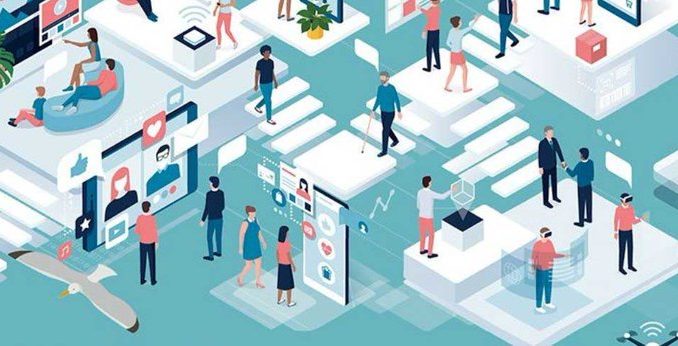
Images have long shaped thinking. Graphic designers, especially for advertising companies, are well-versed in how to convey the luxury of new cars, the strength of professional sports teams, or the attraction of tourist destinations. These images create interest, set expectations, and shape behavior.
The metaphor of thinking machines has a long history, which was reinforced by images, which adorned books, magazines, corporate advertisements, and websites. A key image, showing a human finger reaching out to touch a robot finger, is based on Michelangelo’s painting, The Creation of Adam, showing God’s finger reaching out to Adam’s finger. That image, created during 1508-1512 in the Vatican’s Sistine Chapel, inspired many artists for 500 years, leading to the familiar AI and robotic portrayal of a human finger touching a robot finger, and then variations, such as human and robot handshakes.

(Via Max Pixel, CC0 Public Domain)
Other robotic images depict humanoid robots with electronic wiring and human brains with chip circuitry. These compelling images support the misguided notion that future robots will be made in the form of humans, suggesting other human-like capabilities such as two-legged mobility, five-fingered dexterity, and dominance of voice interaction. These images also suggest that computers could or should be emotional, have beliefs, and possibly be conscious.
I’ve long felt that these images were misleading, thereby slowing research on technologies that ensured human control, which would be designed to amplify, augment, empower, and enhance human performance. My expectation for the future is that computers will become supertools, such as the AI-infused cellphone camera or navigation apps, or active appliances like Google’s Nest for home control and iRobot’s Roomba for house cleaning. These innovations give people super-powers by ensuring human control, while increasing the level of automation. They boost human capabilities.
